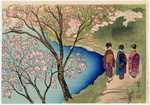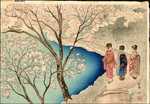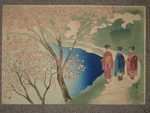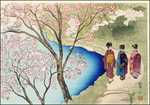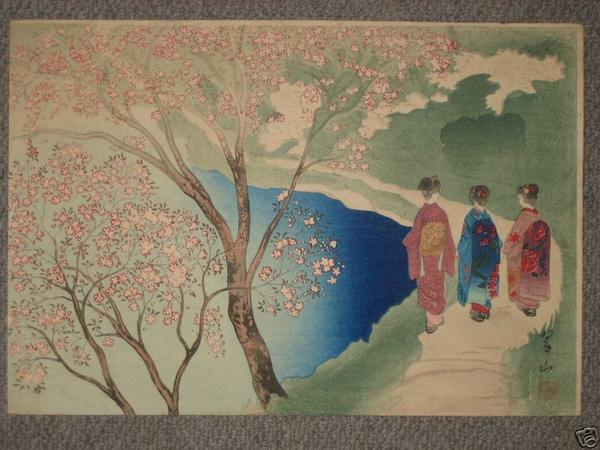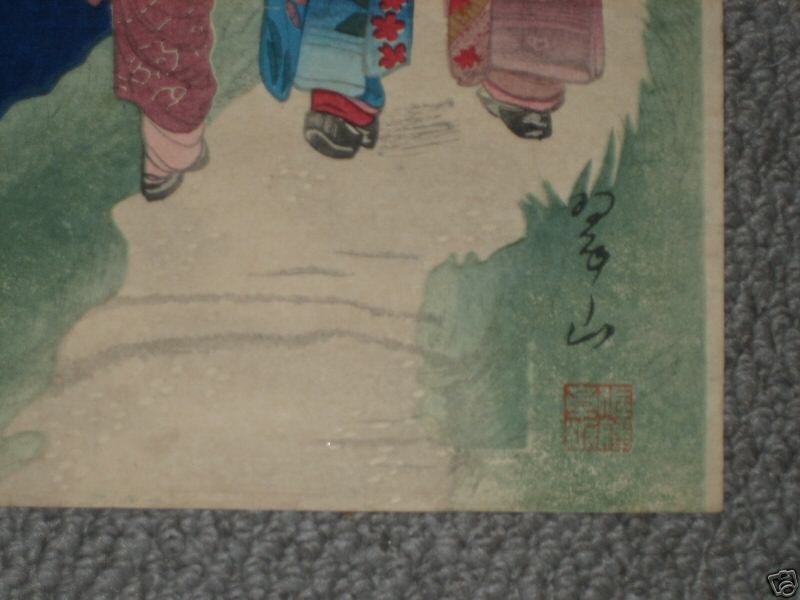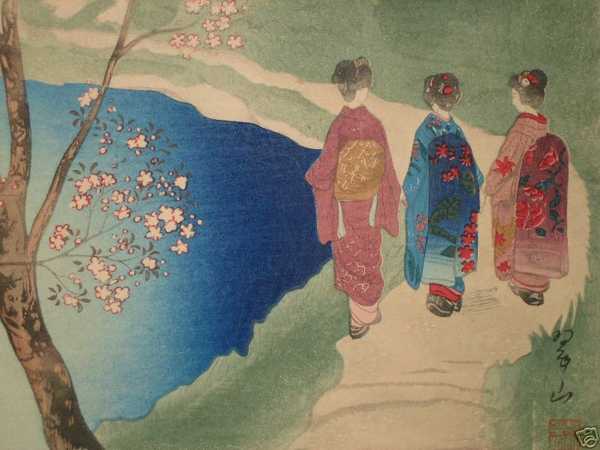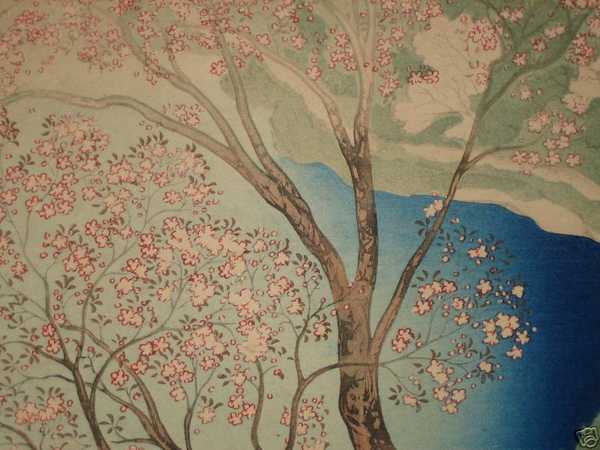| | |
| Artist: | Suizan Miki (1887-1957) |
| Title: | Three girls strolling at Arashiyama |
| Series: | Selected Views of Kyoto |
| Date of first edition?: | 1924 |
| Publisher (first edition)?: | Sato Shotaro |
| Publisher (this edition)?: | Sato Shotaro |
| Medium (first edition): | Woodblock |
| Medium (this edition): | Woodblock |
| Format (first edition): | Large Oban
|
| Format (this edition): | Oban |
| DB artwork code: | 33396 |
| Notes (first edition)?: |
Around 1924, Miki worked with the Kyoto publisher Sato Shotaro on the design of six bijin-ga and eight landscape prints, carved by Maeda and printed by Oiwa in limited editions of 200. They were likely reprinted in a later unnumbered edition. (Hanga.com)
Reference: Other examples are illustrated in:
Dorothy Blair, Modern Japanese Prints, Wood-block Prints by Ten Artists. Toledo: The Toledo Museum of Art 1936, (reprint 1997), no.120. According this catalogue the edition was of 200 copies, block carver Mayeda and Printer Oiwa.
Amy Newland e Hamanaka Shinji. The female image 20th century prints of Japanese beauties. Leiden, 2000, no.145. |
|
| Notes (this edition)?: |
| The following information was taken from the original web listing of this artwork. Note that there may be some inaccuracies:
Friday, 4 January 2008
This is a beautiful original woodblock print, by noted shin hanga printmaker Miki Suizan. It is titled "Spring in Arashiyama". Signed lower right and sealed with the artist's red seal. Good color and impression. Condition is basically good for the age, with very minor soiling to the image lower left, and a couple of faint smudges which are only visible upon close inspection. Beautiful bokashi (gradation of color) in the blue of the riverside. Quite often, the pinks of shin hanga prints fade to white over the years; in this example, the pinks are very nice, with no noticeable fading. Ot is oban size, about 11 x 15 1/2 plus small margins as issued (Miki Suizan prints always have two small margins, and two that are trimmed to the edge of the image; I assume that this is because his images are slightly larger than typical oban size prints, and the close trimming is necessary in order to get four prints from one large sheet of mulberry paper.)
|
|



